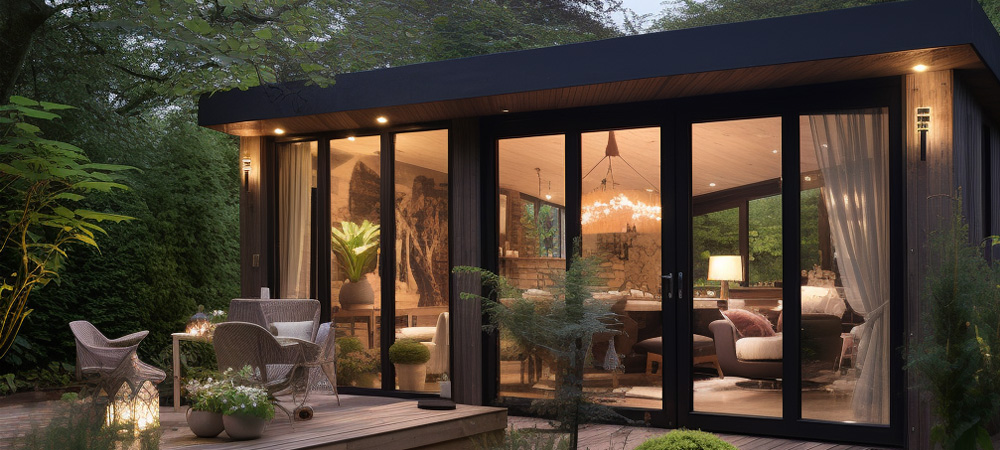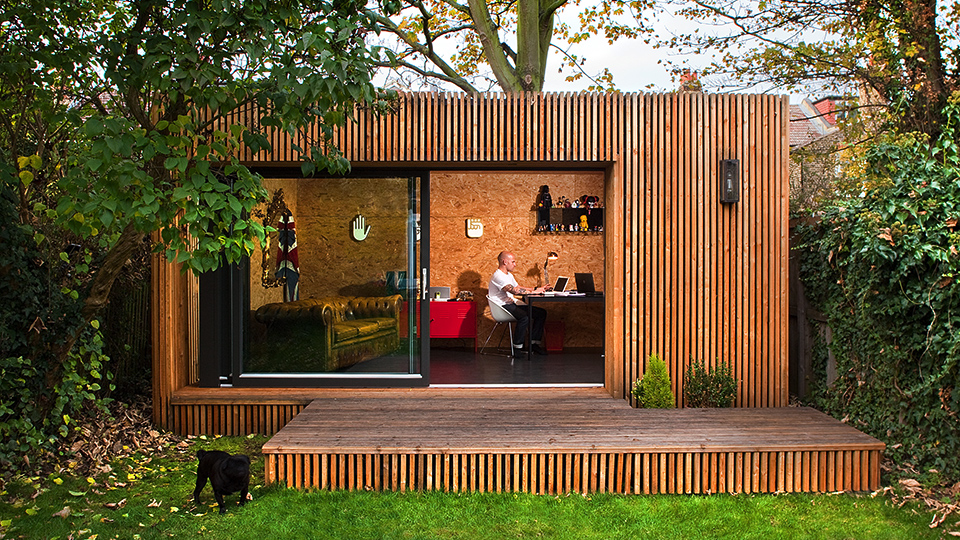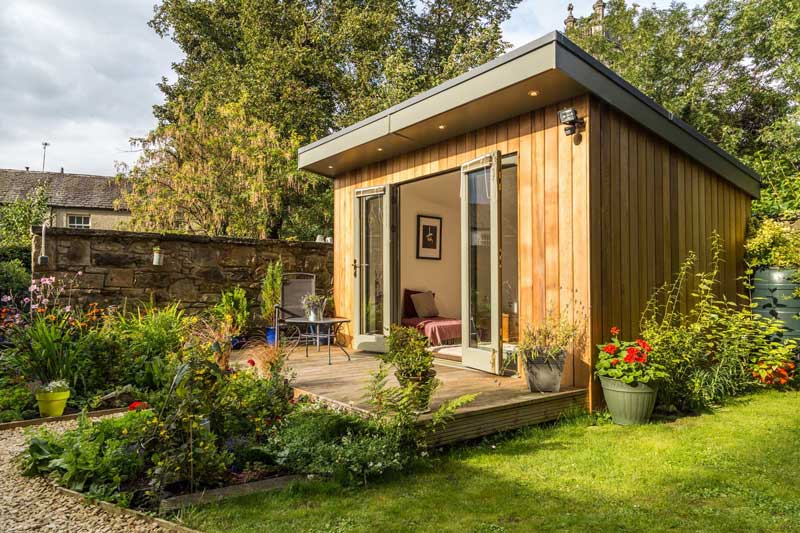Good Reasons On Planning Permission For Garden Sheds
Good Reasons On Planning Permission For Garden Sheds
Blog Article
What Are The Dimensions Restrictions For Gardens?
If you're thinking of the construction of conservatories or garden rooms or outhouses as well as garden offices the size limitations can determine whether planning permission is needed. Here's the criteria for size which could force you to obtain planning permission.
For detached outbuildings, permission to plan is usually required when the total area of all the outbuildings that are proposed, as well as any others already existing, exceeds half the area of the land around the house (excluding the footprint of the house).
Height Restrictions:
Single-story structures: The maximum eaves height cannot exceed 2.5 meters, and the overall height should not exceed 4 meters in the case of a dual-pitched roof or 3 meters in the case of any other kind of roof.
Constructions that are that are within two meters of the boundary of the property The maximum height of the building must not be more than 2.5 meters.
Floor Area:
Even if planning approval is not required, structures with more than 30 square meters might require approval by the building regulations.
Proximity to boundaries:
If the structure is more than 2.5 meters in height and is located within 2 meters of a line, then the building permit will be required.
Building Use
There is no limit on size, but the intended use for the garden room may impact the necessity for planning permission. If, for instance, the structure is intended to be used for housing residents or to run a small business, then planning permission will likely be needed.
Permitted Development Rights:
Permitted Development Rights Permitted Development Rights are subject to certain conditions and limits on size. These rights differ depending on whether the property is located within a protected area or subjected to other limitations.
Conservatories and Extensions
For rear extensions with a single story, the depth maximum of the extension is usually 4 metres for detached homes and 3 metres for terraced or semidetached homes. The depth can be increased to 8 meters or 6 meters under the Neighbourly Consultation Scheme if certain conditions are in place.
The height of an extension of a single story rear should not exceed 4 meters.
Side Extensions
For side extensions, the width cannot be greater than half of the width of the home's original The height cannot exceed 4 meters.
Volume Restrictions
In some areas (like conservation zones or Areas of Outstanding Natural Beauty) Any additional structure that expands the size of the house in more than 10% or 50 cubic metres (whichever is more) could require planning permission.
Front Extensions
Planning permission is typically required for extensions which extend beyond the frontage of the house facing the road.
It's important to confirm with the local authorities, since regulations vary based on where you live and the conditions on the property. Even when planning permission isn't needed, building regulations approval might still be necessary to ensure structural integrity and safety motives. Follow the top outhouse company for website recommendations including garden office hertfordshire, garden room conservatory, costco outbuildings, ground screws vs concrete, garden outhouse, garden room or extension, garden office hertfordshire, how to lay decking on soil, Tring garden rooms, best electric heater for cabin and more.
What Are The Requirements For Garden Rooms As Well As Other Structures That Are Related To Neighbourhood Concerns?
If you are planning to construct conservatories, garden offices outhouses, garden offices or outhouses, the concerns from your neighbors will determine whether planning permission is needed. Here are the major elements to be considered overlooking, privacy and extensions.
Planning permits are required for any new structure that could cause a loss in privacy because it overlooks adjacent properties. This will ensure that the proposed building does not adversely affect the lives of nearby residents.
Loss and overshadowing of light
Planning permission is required in cases where a construction project will likely to create shadows over neighboring homes or significant reduction in lighting. The local planning authority will be able to determine the impact of the proposed structure on daylight and sunlight in nearby properties.
Disturbance and Noise
Planning permits are required when the garden extension or room will be used for any activity that causes the sound (such as a home office that hosts guests, a workshop, music room, etc.). The noise level must be acceptable to neighbors and not cause disturbance.
Visual Impact:
The size, design and design of the building must be in keeping with the aesthetics of the area. Planning permits ensure that the proposed development is visually acceptable and does not harm the aesthetics of the neighborhood.
Boundary Proximity
It could be that structures that are constructed near to the property boundary require planning approval, especially if their height exceeds 2.5 meters and are within 2 meters of the boundary. This is to handle potential conflicts and the impact they could have on neighbouring properties.
Shared Access and Rights of Way:
If the construction is affecting rights of access or shared access points, planning permission is necessary to ensure that these aren't blocked or impacted.
Oppositions from Neighbors
People living in the immediate area have a right to consult on planning applications. The authority for planning will consider the views of neighbors when deciding whether or not approval is granted.
The impact on property values:
Although not the only consideration, changes that could alter the value of nearby homes may influence the need for a planning permit. The local authority will consider the impact of these changes when making a decision.
Covenants and Deed Restrictions
If you own a covenant or deed restriction for your property, it might require that you comply with these, regardless whether planning permission is granted. These legal agreements could dictate what can and cannot be constructed, which can affect neighborhood harmony.
Construction Disturbance:
The planning permit can address the concerns of the disruptions that might occur during the construction phase such as noise and dust. The construction may have conditions on the construction project to reduce the impact it has on neighbors.
Infrastructure Impact:
If the new structure places an additional burden on the local infrastructure (e.g., drainage, parking, road usage), planning permission ensures that the impacts are analyzed and managed appropriately.
Community Consultation:
In some cases the need for a more extensive community consultation may be required, particularly for more complex or controversial projects. This enables the process to be more democratic that takes into consideration the views of the local community.
Summary: Concerns regarding the surrounding neighborhood have a significant impact on the decision of whether to grant permission to garden offices, conservatories, outhouses or garden extensions. Making sure that the development proposed does not alter the living space as well as the privacy, light, sound levels, and overall character of the neighborhood is vital. Consultation with the local planners and early interaction with neighbors can assist in reducing these concerns. View the top rated what's a conservatory room for more tips including myouthouse, garden room, 4m x 4m garden room, garden rooms hertfordshire, gym outhouse, insulated garden rooms, outhouse, garden office hertfordshire, costco garden office, garden room and more.
What Kind Of Permission Do I Require For Garden Areas, Etc. Regarding Agricultural Lands
Planning permission and restrictions are applicable for the building of conservatories, garden rooms or outhouses on agricultural land. Here are key points to consider the following: Change of Use
Land designated as agriculturally is utilized for farming and similar activities. Planning permission is usually required for changing the land use to garden structures or residential. This is because it requires the change of its agricultural purpose.
Permitted Development Rights:
Residential land is subject to a different set of development rights that are permitted than agricultural land. You can build certain structures for agriculture without planning permission. However, these kinds of structures are not meant to be used for residential gardens or offices.
Size and Scale
The proposed dimensions and size of the building will determine whether planning permission will be required. Bigger buildings or ones that cover a substantial part of the land are more likely to require permission.
The impact on agricultural use
Planning permission is likely to be required if the proposed construction interferes with the agricultural uses of the land. This could mean that the land is reduced in available space for livestock and crops.
Green Belt Land:
The restrictions on the land are designed to limit urban sprawl, and protect open space. Any new structure on Green Belt land typically requires approval for planning and must satisfy stringent criteria.
Design and Appearance
The new structure should be constructed and designed in a way that's consistent with the rural characteristics of the surrounding region. Planning permission assures that the proposed structure does not adversely affect the natural landscape or provide visual appeal.
Environmental Impact:
Any construction on agricultural land should be considered with regard to its environmental impact. If you're applying for planning permission An environmental impact study might be required to make sure that the new structure does not harm the ecosystems of the area.
Distance from existing structures
The close proximity of a garden space or office space being proposed to the existing farm structures can impact the the requirements for planning. Structures that are built close to farm buildings will be treated differently from those on open fields.
Access Infrastructure
You need to take into account the effect on infrastructure, for example, roads, water, and waste management. The planning permit will decide if the existing infrastructure can support a new building.
Use Class Order
The law of planning defines certain classes of land for agricultural purposes. It is typical to require planning permission to alter the land's classification to permit non-agricultural use.
Local Planning Policies
Local planning authorities have specific policies pertaining to agricultural land. Local planning authorities have specific policies for agricultural land.
National Planning Policy Framework
In the UK the National Planning Policy Framework gives guidelines for how to utilize and develop land. Planning permissions for agricultural land are evaluated in the light of the NPPF. This is a focus on sustainable growth and rural areas.
In short it is clear that planning permission for garden rooms, conservatories outhouses, garden offices, outhouses or extensions to farmland is typically required because of the need to change the land's use and ensure that it is in compliance with national and local plans. To identify the specific requirements and to obtain the required approvals, it is essential to consult local planning authorities. Read the top costco outhouse for blog examples including best heater for log cabin, Tring garden rooms, garden out house, what size garden room without planning permission, outhouse garden rooms, garden office electrics, insulated garden rooms, garden rooms in St Albans, outhouses for garden, garden rooms and more.